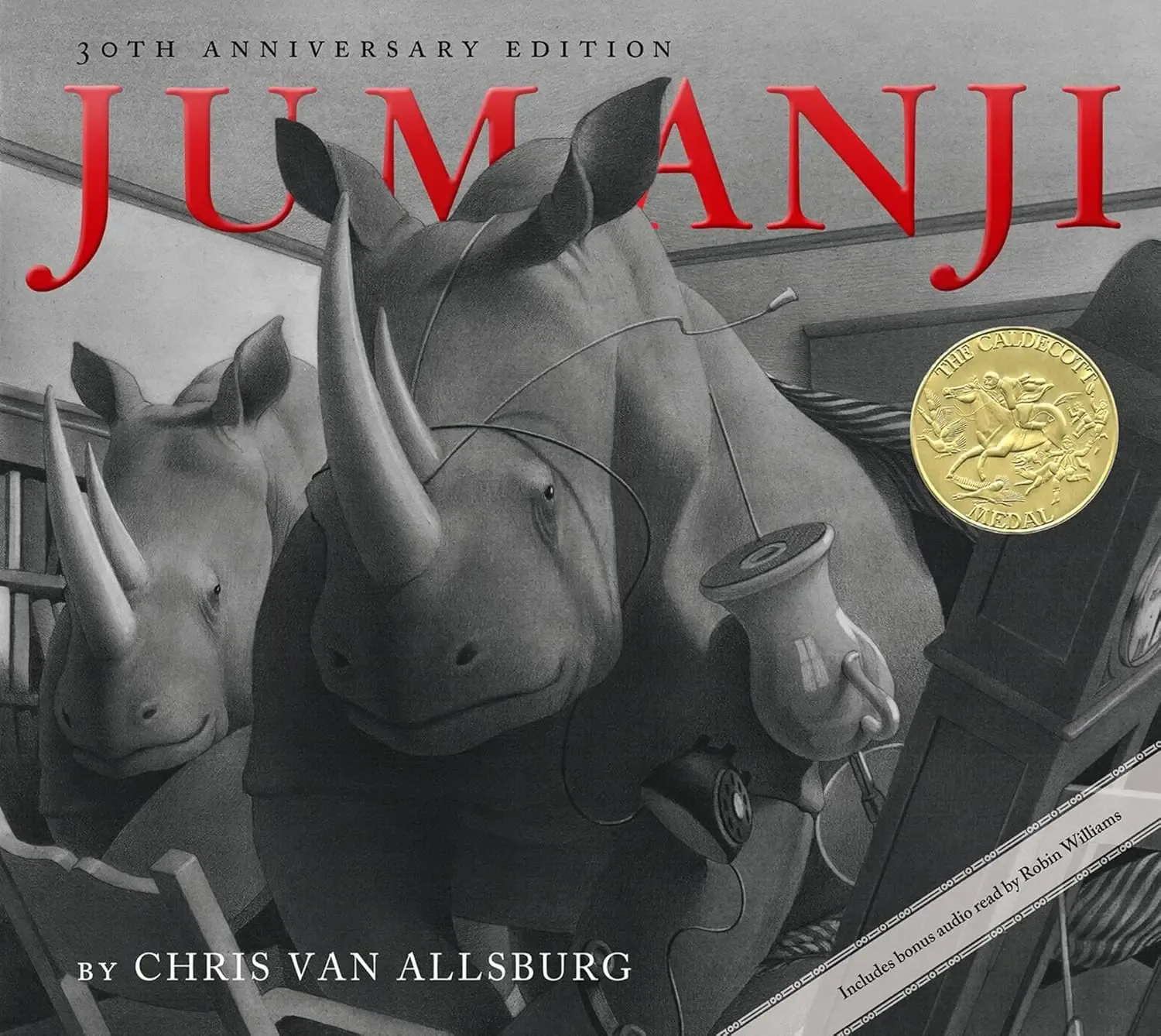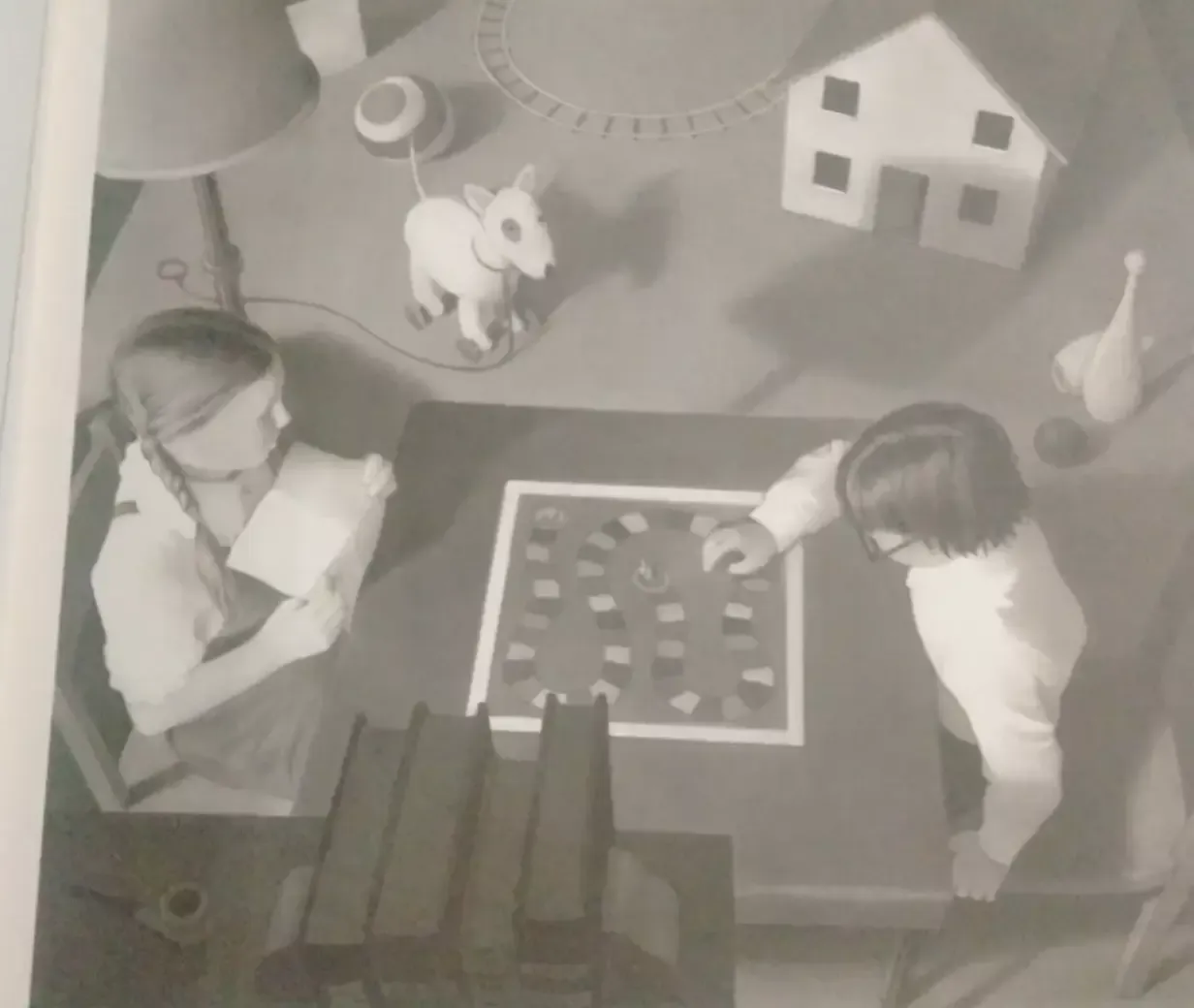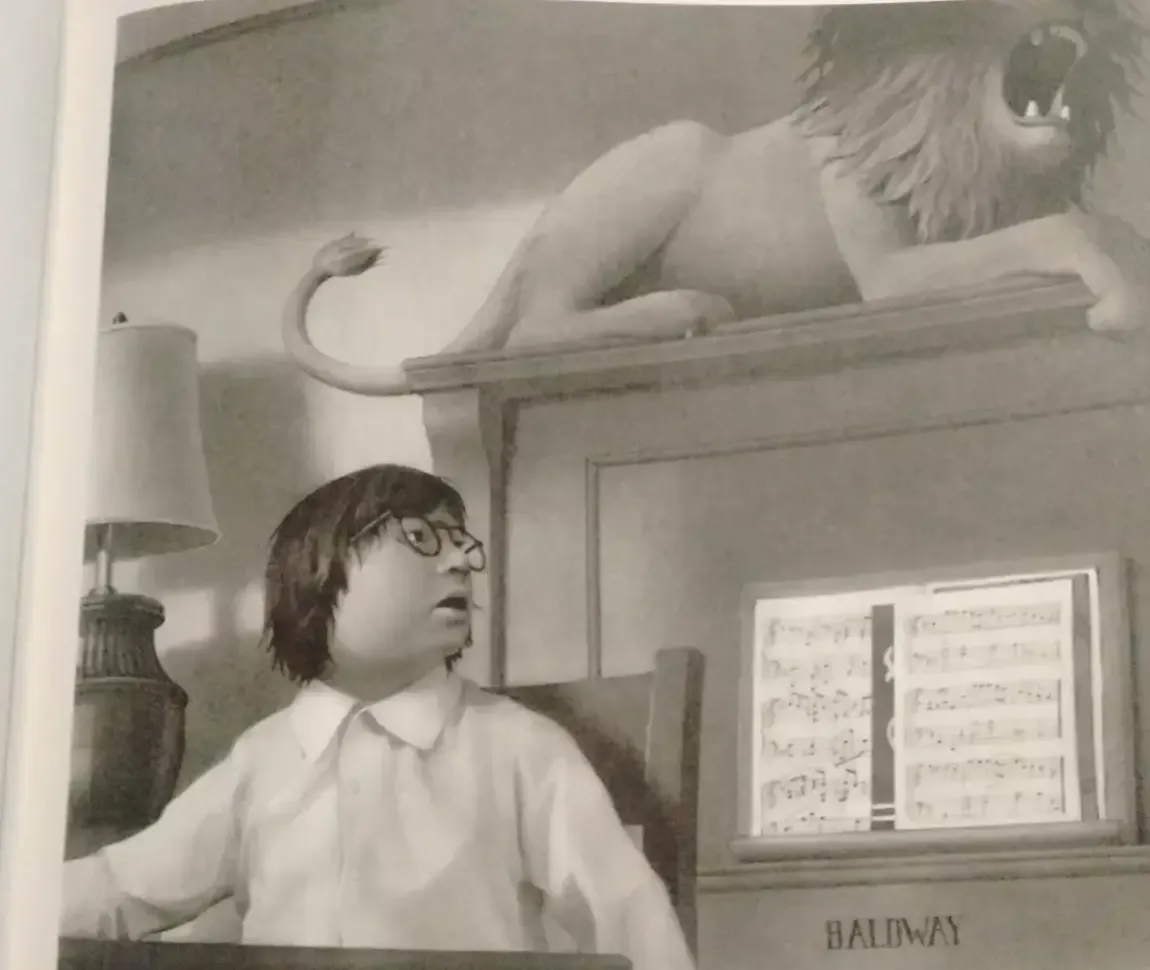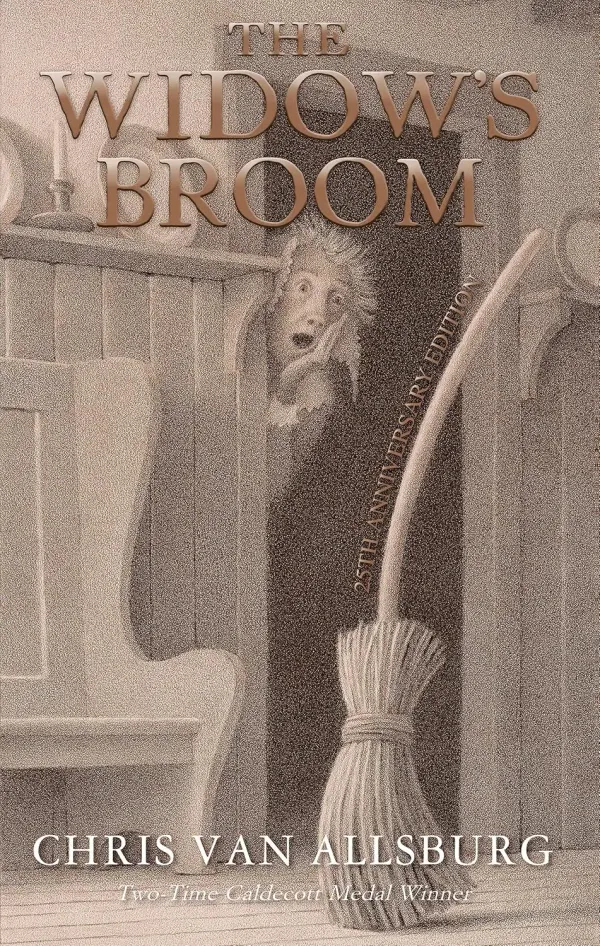Chris Van Allsburg’s Jumanji is a classic picture book that transports readers into a world where the lines between fantasy and reality blur. At the heart of the story are two siblings, Judy and Peter, who stumble upon a mysterious board game called Jumanji . What they quickly discover is that this is no ordinary game, every roll of the dice brings the wild jungle and its unpredictable dangers directly into their home.
Van Allsburg’s ability to create a sense of wonder and suspense is what makes Jumanji such a memorable reading experience. His carefully detailed black-and-white illustrations play a crucial role in setting the tone. Each illustration has a quiet intensity, drawing readers deeper into the unfolding chaos as the children realize that they must finish the game to make the jungle disappear. Van Allsburg’s precise and realistic style heightens the tension, making the bizarre events of the story, monkeys in the kitchen, lions in the living room, and monsoons indoors, feel eerily plausible.
What makes Jumanji so captivating is the balance between the mundane and the extraordinary. Peter and Judy’s afternoon begins innocently enough, with them looking for something to cure their boredom while their parents are away. But once they open the game, the calmness of their ordinary home is upended by unpredictable, life-sized jungle dangers. The game’s challenges escalate with every turn, from stampedes of rhinoceroses to a runaway python, creating a thrilling sense of urgency as the children race to finish before their home is completely overtaken.
While the fantastical elements of the book drive the plot, Van Allsburg subtly explores themes of responsibility and consequences. Peter and Judy’s adventure serves as a reminder that actions, whether in play or in life, have real-world effects. The children are responsible for dealing with the mess they’ve unwittingly unleashed, and it’s only by seeing the game through to the end that they can restore order. This theme is woven into the narrative in a way that feels organic, providing a layer of depth without detracting from the story’s fast-paced excitement.
The pacing of Jumanji is another strength. Van Allsburg masterfully builds suspense by allowing the story to unfold gradually. Each new development, whether it’s a lion appearing or a torrential rainstorm flooding the house, arrives just in time to keep readers on the edge of their seats. But amidst the chaos, there are moments of quiet anticipation, like when the children realize just how high the stakes are if they don’t finish the game. These shifts in pace make the story feel dynamic, pulling readers through the book with a mix of excitement and trepidation.
Though Jumanji is often remembered for its action-packed plot, it’s the lasting sense of mystery that gives the story its enduring appeal. Van Allsburg leaves readers with a final twist when the game is left behind for another set of unsuspecting players, hinting that the adventure is far from over. This open-ended conclusion adds to the magical, otherworldly quality of Jumanji and invites readers to imagine what might happen next.
Chris Van Allsburg’s Jumanji is a masterful combination of imaginative storytelling, suspenseful plotting, and stunning illustration. It’s a picture book that continues to captivate children and adults alike, offering both a thrilling adventure and a thought-provoking exploration of the unexpected consequences of play. Whether being introduced to the story for the first time or revisiting it after many years, readers are sure to be swept away by the magic and mystery of Jumanji .
Questions to ask while reading:
- What would you do if you found a mysterious board game like Jumanji?
- How do Peter and Judy's actions affect the outcome of the game?
- What do you think will happen to the game after Peter and Judy finish playing?






